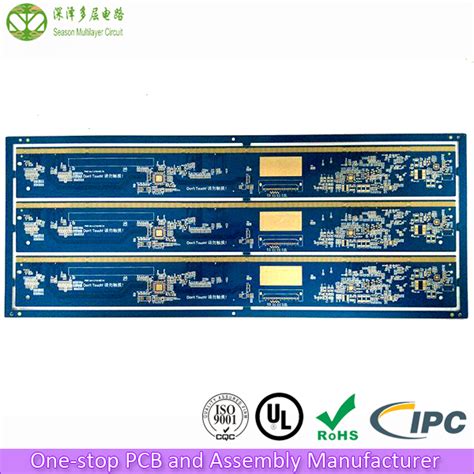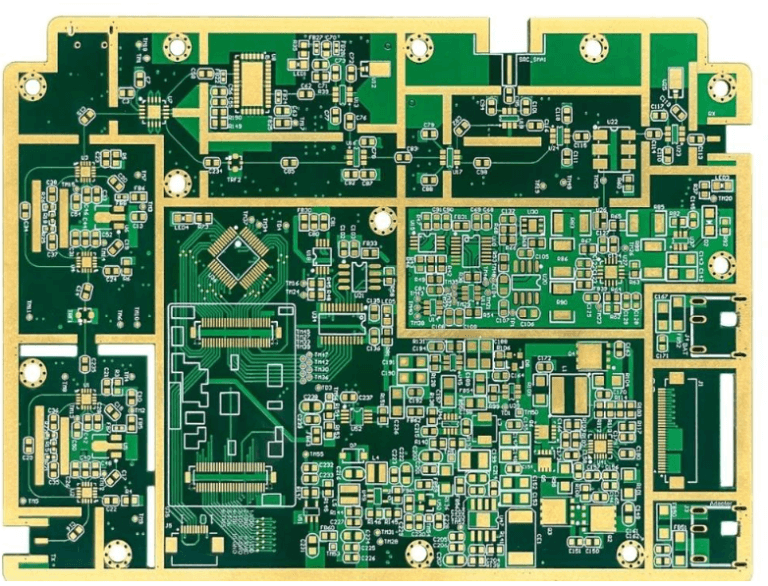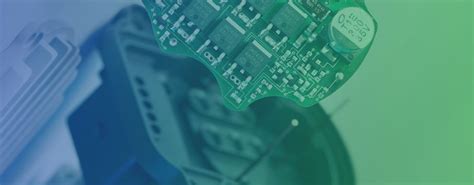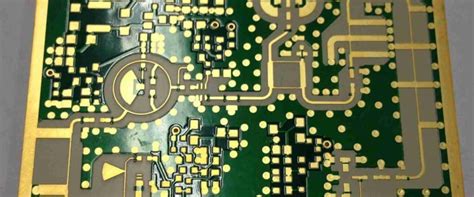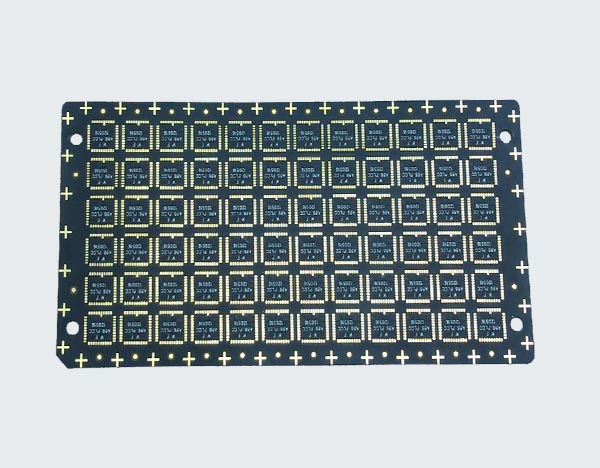Mastering 4 Layer PCB Prototypes: A Guide for Innovators
Key Takeaways
When embarking on the journey of 4 layer PCB prototype development, several key elements are crucial to your success. Understanding PCB manufacturing processes is essential, as it influences everything from design choices to production timelines. By collaborating with reputable PCB manufacturing companies, you can leverage their expertise and resources, which can ultimately lead to more efficient project outcomes. The PCB manufacturing cost is a vital consideration; proper budgeting helps you to balance quality and affordability, ensuring that your innovative ideas do not exceed financial constraints. Familiarizing yourself with the intricacies of the PCB manufacturing business will also empower you to make informed decisions, allowing you to navigate challenges like design complexities and material selection. By keeping these takeaways in mind, you’ll position yourself for a successful prototyping experience that enhances your project’s overall performance.
Mastering the Basics of 4 Layer PCB Design
When embarking on the journey of 4 layer PCB design, it’s essential to grasp the foundational principles that underpin effective pcb manufacturing processes. A 4 layer PCB typically consists of an outer and inner layer, essential for complex circuit designs that require compactness and efficiency. Understanding the layout is critical, as you work to balance the use of spaces on these layers while accommodating for the pcb manufacturing cost. Collaborating with reputable pcb manufacturing companies can help streamline your design, ensuring your prototype meets industry standards while optimizing performance. Additionally, considering techniques to minimize electromagnetic interference (EMI) becomes paramount, as any disruption can adversely affect your design’s integrity. By incorporating good practices from established pcb manufacturing business models, you can enhance not only the performance but also the reliability of your 4 layer PCBs. As you dive deeper into design intricacies, remember that every decision impacts both functionality and cost-efficiency in your projects. For resources and services related to prototyping and manufacturing, you may explore Andwin PCB.
Key Design Considerations for 4 Layer PCBs
When embarking on the journey of creating 4 layer PCBs, it is essential to grasp the key design considerations that can significantly impact your prototype’s performance and reliability. A well-thought-out design starts with understanding the layout of your PCB manufacturing process, including how components are arranged and connected. You should prioritize signal integrity by minimizing trace lengths and maintaining appropriate spacing between traces, which helps in reducing potential interference.
Furthermore, selecting the right materials plays a critical role. The choice of substrate material affects both the performance and cost; therefore, it is vital to work closely with dependable PCB manufacturing companies to ensure that you are leveraging quality materials that align with your budget. Remember to take into account the pcb manufacturing cost, as this can quickly increase depending on factors like material thickness, layer count, and complexity of design.
Your design should also address thermal management; heating issues can arise from densely packed components or high-power devices. Integrating thermal vias or heat sinks can assist in dissipating heat effectively. Another critical aspect is grounding; ensuring a solid ground plane reduces noise and improves overall performance.
Incorporate thorough documentation from the outset as well; this includes schematic files and layout designs which facilitate smoother communication with pcb manufacturing partners. The entire pcb manufacturing business depends on precise specifications laid down by you as a designer.
To summarize this section visually, here’s a simple table highlighting essential considerations:
| Design Consideration | Importance |
|---|---|
| Trace Length | Reduces signal delay |
| Substrate Material | Affects performance & costs |
| Thermal Management | Prevents overheating |
| Grounding | Improves noise immunity |
| Documentation | Enhances collaboration with manufacturers |
By paying careful attention to these aspects during your design phase, you will set a robust foundation for your 4 layer PCB prototypes, leading to greater success in achieving your innovative objectives.
Understanding EMI and Its Impact on PCB Performance
When it comes to 4 layer PCB prototypes, one of the critical aspects you must consider is Electromagnetic Interference (EMI). EMI can significantly affect the performance and reliability of your prototypes. As you embark on your pcb manufacturing journey, understanding how EMI interacts with your PCB design is essential for successful outcomes. Poorly designed routing and inadequate grounding can result in increased EMI, leading to signal degradation and potential system failure. It’s crucial to evaluate the pcb manufacturing cost not just in terms of materials, but also the long-term impact of EMI on device performance and reliability. Many pcb manufacturing companies emphasize that mitigating EMI from the design phase saves costs significantly down the road. By implementing smart design choices, such as careful component placement and layer stack-up strategies, you can reduce EMI effects. Effectively controlling these factors in your pcb manufacturing business will not only enhance performance but also ensure your prototype meets required standards without excessive modification costs later on. Embracing best practices related to EMI can be a game changer for innovators looking to elevate their PCB designs.
Techniques for Reducing EMI in 4 Layer PCBs
In the pursuit of creating effective 4 layer PCB prototypes, understanding and mitigating Electromagnetic Interference (EMI) is crucial. EMI can compromise the performance and reliability of your designs, so incorporating specific techniques during the design and prototype phase is essential. One approach is to optimize the layer stack-up. By strategically placing power and ground planes adjacent to signal layers, you create a natural shield that minimizes interference. This configuration not only aids in noise reduction but also improves overall signal integrity.
Additionally, using ground planes effectively can provide a low-impedance return path for current, thus reducing potential loops that could pick up interference. When selecting materials from various pcb manufacturing companies, consider using materials with lower dielectric constants to enhance high-frequency performance and reduce signal loss.
Implementing proper routing techniques is also vital; avoid sharp corners in traces and maintain consistent trace widths to reduce coupling between adjacent signals. Another key strategy is to employ decoupling capacitors placed close to active components within your design, as they help alleviate voltage fluctuations that could lead to EMI issues.
Lastly, ensure that you account for the pcb manufacturing cost, as certain techniques may influence the fabrication methods used by different manufacturers. Balancing performance with cost requires careful consideration in design decisions but ultimately leads to a prototype that performs well across various applications while effectively managing EMI challenges. By integrating these strategies into your 4 layer PCB prototypes, you will significantly enhance their resilience against interference from both external and internal sources.
Best Practices for Prototyping 4 Layer PCBs
When embarking on the PCB manufacturing journey, especially for 4 layer PCBs, understanding the nuances of effective prototyping is essential for success. You should prioritize a comprehensive design that supports your unique engineering objectives. Start by selecting high-quality PCB manufacturing companies that can meet your specifications and align with your project timeline. It’s wise to engage in iterative design processes to refine your prototype, allowing you to identify and resolve potential issues early on. Pay attention to the choice of materials and compatibility with assembly techniques, as these factors can significantly influence the overall PCB manufacturing cost. To ensure reliability, implement rigorous testing methods throughout the prototyping phase; this will not only validate your design choices but also help in mitigating any unexpected operational challenges before scaling up to production. Adopting these best practices will empower your PCB manufacturing business to innovate effectively while maintaining quality and reducing unnecessary costs.
Testing and Validation of 4 Layer PCB Prototypes
When it comes to testing and validation of your 4 layer PCB prototypes, your approach can significantly impact the success of your design. An initial step involves conducting thorough electrical tests to ensure all connections are correctly established and there are no shorts. You’ll want to utilize automated test equipment that aligns with the capabilities of modern PCB manufacturing processes. This will not only streamline your testing but also help you identify any design flaws early on. Additionally, performing thermal tests is essential to assess how your prototype handles heat dissipation, which can affect performance and reliability over time.
Moreover, evaluating the prototype’s performance under various environmental conditions will give you valuable insights into its durability and operational efficiency. For instance, checking for electromagnetic interference (EMI) is crucial; you can achieve this by employing shielding techniques or rerouting traces based on previous insights gathered from similar designs.
Collaborating with reliable PCB manufacturing companies provides access to sophisticated testing facilities that may otherwise be unavailable for smaller operations. The costs associated with these testing services should be considered as part of the overall PCB manufacturing cost, as they play a pivotal role in validating your design before mass production begins.
In this stage, it’s essential to document all findings meticulously; this documentation becomes a guiding resource for future PCB manufacturing business endeavors. Adhering to best practices in testing not only prevents costly errors but also enhances the credibility and performance reliability of your innovative projects. By ensuring thorough validation processes, you’re setting a strong foundation for success in the competitive landscape of electronics development.
Common Challenges and Solutions in 4 Layer PCB Development
Developing a 4 layer PCB can present several challenges that require careful consideration and strategic solutions. One common issue is managing the PCB manufacturing cost, which can escalate due to design complexities and material selections. To mitigate this, you should work closely with PCB manufacturing companies to ensure that you optimize your design for cost-effectiveness without compromising quality.
Another significant challenge is ensuring signal integrity, particularly due to the Electromagnetic Interference (EMI) that can arise in multi-layer designs. Utilizing proper layering techniques and choosing compatible materials can help reduce these interferences effectively. In addition, implementing ground planes strategically around sensitive signals can enhance performance significantly.
Moreover, thermal management is often overlooked in 4 layer PCB development. It’s essential to account for heat dissipation when designing your layout; you may want to consider integrating thermal vias for effective heat transfer. To help navigate these challenges and ensure successful outcomes, remember that adopting best practices during the prototyping phase is key. Following rigorous testing protocols during validation will also help identify potential issues early on.
“The key to efficient 4 layer PCB development lies in proactively addressing challenges through collaboration with experienced PCB manufacturing businesses.”
Incorporating user feedback early in the design process allows for adjustments that can further streamline production and minimize errors, ultimately leading to a more robust final product.
Future Trends in 4 Layer PCB Technology
As the demand for more complex electronic devices continues to grow, the landscape of 4 layer PCB technology is evolving rapidly. One prominent trend is the integration of advanced materials that enhance performance while reducing the overall PCB manufacturing cost. For instance, high-frequency materials are increasingly being utilized to support faster signal transmission, which is crucial in applications like telecommunications and high-speed computing. Moreover, manufacturers are focusing on improving thermal management within 4 layer PCBs, addressing issues that arise from more powerful components generating excess heat.
Another significant development in this field is the rise of automation in the PCB manufacturing business. Automation not only streamlines processes but also allows for greater precision and consistency, reducing waste and improving efficiency among PCB manufacturing companies. This shift helps manufacturers meet tight production schedules, which align with the fast-paced technological advancements present today.
Additionally, sustainability is becoming a focal point for PCB production. With increased awareness about environmental impacts, many PCB manufacturing companies are actively seeking eco-friendly materials and methods. This trend not only caters to a growing consumer demand for responsible product sourcing but can also optimize processes to help reduce overall costs.
As you look towards innovative projects, understanding these future trends can guide your endeavors in designing efficient and effective 4 layer PCBs, ensuring your products meet not just current standards but also future expectations in performance and sustainability. The continuing evolution of technology will pave the way for further improvements that promise an exciting future for the industry.
Conclusion
In the realm of 4 layer PCB prototypes, achieving a balance between performance and cost is crucial. As you navigate through the pcb manufacturing landscape, understanding the intricacies of design and production will empower you to make informed decisions. Collaborating with reputable pcb manufacturing companies can significantly influence your project’s success. They often bring valuable experience in optimizing designs to reduce the overall pcb manufacturing cost, thereby enhancing your project’s feasibility. Additionally, as you venture into the pcb manufacturing business, remember that staying updated on technological advancements and industry trends will provide you with a competitive edge. By incorporating best practices in your design process, such as effective EMI management and rigorous testing protocols, you can ensure that your prototypes meet the highest standards of quality and reliability. Embrace the journey of innovation in 4 layer PCB development, knowing that thoughtful preparation and expert collaboration are key to realizing your creative visions.
FAQs
What is a 4 layer PCB, and why is it important?
A 4 layer PCB (Printed Circuit Board) is a type of electronic board that integrates four layers of circuitry, enabling complex connections and component placements. This design is crucial for advanced electronic devices as it provides improved signal integrity and reduces electromagnetic interference (EMI).
What should I consider when selecting PCB manufacturing companies?
When choosing PCB manufacturing companies, consider their expertise in PCB manufacturing, turnaround time, production capabilities, quality certifications, and customer reviews. Evaluating their experience with 4 layer PCB techniques can ensure your project meets specific performance requirements.
How does the design of a 4 layer PCB affect its manufacturing cost?
The PCB manufacturing cost can vary significantly based on design complexity. A well-thought-out layout with efficient space utilization can reduce costs while enhancing performance. Advanced designs may lead to higher costs due to the involvement of specialized materials and production processes.
What are some common challenges faced during the PCB manufacturing process?
Common challenges include managing EMI, ensuring adequate thermal dissipation, and dealing with component placement restrictions. Engaging in proactive design strategies can mitigate these issues during the PCB manufacturing business process.
How can I ensure the quality of my 4 layer PCB prototype?
To guarantee quality, conduct thorough testing and validation after prototype fabrication. Employ techniques such as Automated Optical Inspection (AOI) or functional testing to identify potential flaws early on in your PCB manufacturing venture.

